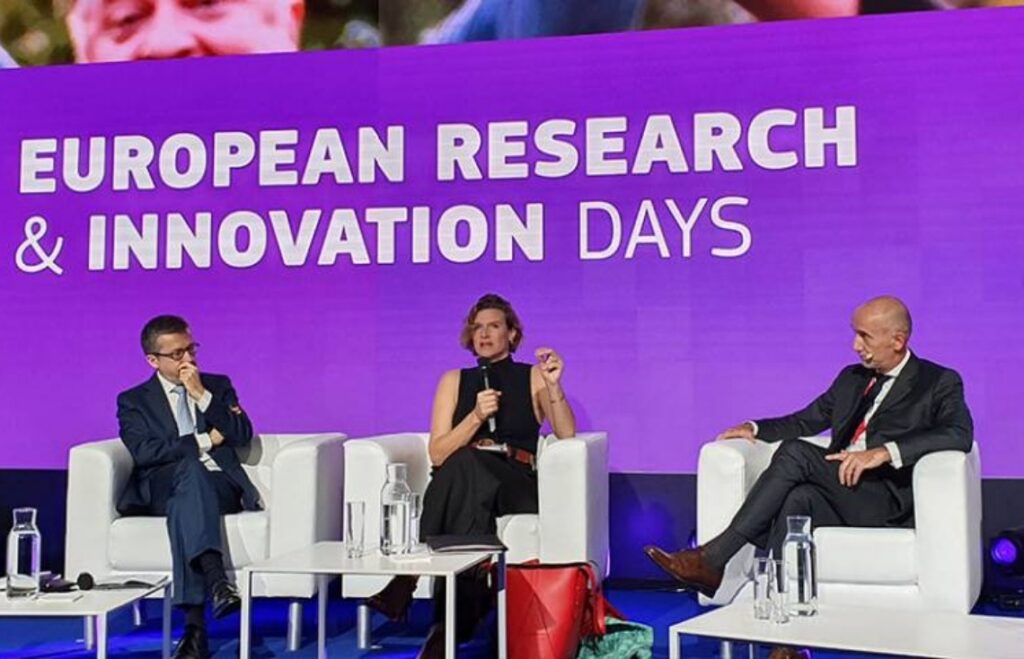Two years after the pandemic, bringing an audience together often means asking the question: physical or virtual? The latter has proven to be more effective than a return to being on site in some cases. And sometimes the opposite is true. So should we be routinely turning to the hybrid option and combining the two? As is often the case, the answer is a grey area – it all depends on the objectives of the event.
1. Hybrid and simultaneous broadcasting for the public sphere
Michaël Malengrez, Head of Projects, Innovation & Quality at VO Europe, works for the European Commission. His goal is to get citizens to sign up to the Green Deal project. With such a broad target audience, hybridisation plus live broadcasting was the obvious choice.
“Physical events are still essential because they symbolise the proximity of the political world and the willingness of elected representatives to get involved on the ground. But they have their shortcomings. First of all, they do not allow all the stakeholders from the different countries to be brought together, if only because of a problem of space.”
The virtualisation of events thus enables a much larger audience to be reached. As a result, the return on investment is much better. Not insignificantly, the carbon footprint is also much better: a virtual event has 10% of the carbon footprint of a physical event, because the main sources of emissions are eliminated, namely travel and journeys by participants, which sometimes account for 90% of the total carbon footprint.
Another advantage of virtual events is that they encourage interaction with the public. In a face-to-face meeting, the audience only has five short minutes after the talk to raise their hands…
“The dynamics of virtual interaction are much more interesting,” says Michaël. “Shy people will have less difficulty expressing themselves in a chat. In addition, the moderators can sort out the less constructive questions.”
An online conference can also be used to make additional information available to everyone, either in text form or through video links. In 2022, you can even imagine a link to the metaverse being provided, if the subject matter justifies it.
2. A “conditional” hybrid event to enhance your brand
For private companies, the problem is different. Obviously, networking, launching a new product or celebrating an anniversary works much less well remotely. Brands suffered the consequences of this during the pandemic. In such cases, hybridisation is only of relative interest; it is better to focus on face-to-face events.
On the other hand, the online format is highly relevant if a company is organising a webinar to promote its expertise. Then again, to reach a wider audience – an international one, for example – it is better to consider multiple connected events rather than have hundreds of people travel across all 5 continents.
However, when using a hybrid format, we recommend that the event be divided into two parts: the physical event first, followed by a virtual summary, which is just as useful for those present as for those who cannot be there.
This is the opinion of Guillaume Anciaux, Project Team Leader at VO Event. He advises his clients to firstly organise a face-to-face event with a suitable room set-up, where only the audience actually there is addressed.
This is followed by a remote broadcast, but with tailor-made production – close-up cameras in particular – which gives Internet users a feeling of proximity. And careful editing, like a “best-of”, which keeps the audience’s attention. “Don’t insist on a 2-hour conference for those who couldn’t be there. By trying to address both audiences at the same time, you are not adopting the right approach for either of them. And that’s a shame.”
3. Train your speakers
In any case, whether you opt for the virtual or the hybrid approach, remember to train your speakers when organising an event. People do not speak in the same way at the front of an auditorium as they do in front of a camera… Some speakers are brilliant in person because they have the ability to “feel the room”, but feel unsettled when they speak remotely…

